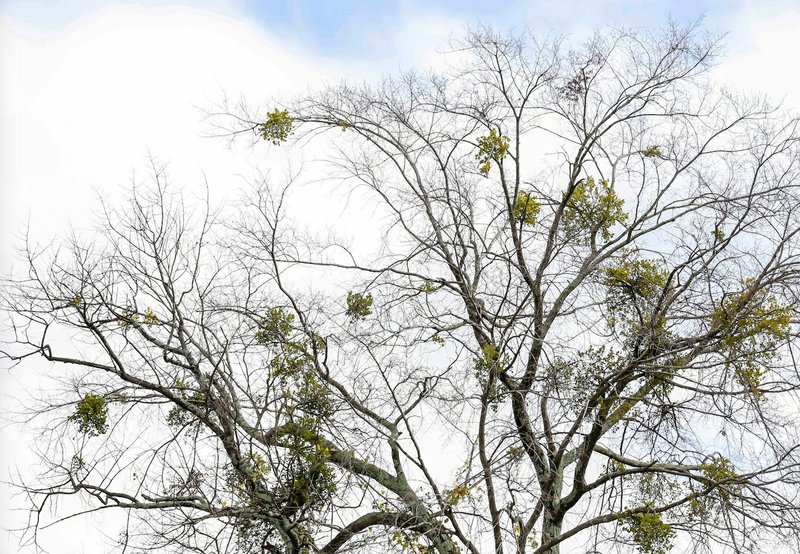Q I had told my neighbor a couple of times about mistletoe on one of the trees in her front yard. I had seen the clump of mistletoe growing bigger each year for 7-8 years. She just had her trees trimmed, but the trimmer did not get rid of the mistletoe because of leaves still on them when they trimmed. Am I correct in thinking that mistletoe on trees is not good, and that mistletoe will kill the tree in time? I remembered my parents had two beautiful oak trees in their backyard, but they had to have them cut down because of a lot of mistletoes on them. The branches started falling down so they called the tree trimmer, and he told them about the effects of mistletoes on them and strongly recommend them to have them cut down. I am kind of paranoid and concerned because that tree is close to my house. So, what do you know about mistletoes on trees and what we should do about them? I am going to tell her that she still has the mistletoe and that she may want to call her tree trimmer back and get it removed so her tree could be saved, right?
A You are correct that mistletoe is a parasite and can grow larger and larger over time. It is not good for a tree, but it rarely will kill a tree. It can kill branches. Over time it is not unheard of for mistletoe clumps to weigh as much as 90 pounds. That is a lot of weight for small limbs, so you could see some limb droppage with large clumps. Mistletoe spreads by the seeds. There are male and female mistletoe plants, and only the female has berries. Although the berries are poisonous to humans, they are not to birds. Birds eat them and the pulp is quite sticky. It gets on their feet and as they sit on a tree limb, the seeds basically are glued to the perch. If moisture conditions are right, the seeds will sprout and "roots" penetrate the branch through a slender growth called a haustorium. From that point on, the mistletoe plant gets nourishment from the tree; but it also produces some of its food through photosynthesis. Cutting out the branches infested with mistletoe would be the only method of control. Mistletoe is used as a decoration but beware of the toxicity of the plant. Stems and leaves can cause an allergic reaction in some people, while the small white berries are quite toxic and can be attractive to children or pets. Artificial sprigs may be a better option.

Q A loropetalum shrub planted two years ago is doing well, so well that it is too tall. I like the graceful shape but need some advice on pruning: Should one take out whole branches at the base or selectively cut at the extremities? And should it be done now or in early spring?
A You are not alone. I have one I planted 15 years ago that was supposed to be 6 feet tall, and it is now 20 or more feet tall. Today, we have great options on loropetalum varieties with various mature heights, but that was not the case when they first flooded the market. If yours is too tall, get it through the winter, let it bloom in the spring and then prune. I would definitely suggest selective pruning of branches, but beware if you have a variety that has the potential for more height: This is not going to be a one-time pruning. I gave up and made mine an ornamental tree.

Q Hi, Janet. Love to read your column each week. Some friends of ours gave us an abundant amount of figs this year. When we lived in Crossett for nearly 30 years, we enjoyed a large fig tree that someone had planted previously. It was more than one tree but was always productive with very little help from me. We moved to southern Sharp County 7 ½ years ago and knew nothing of people growing them here. Now we know that it can be done successfully. These are the "turkey" figs that can grow to 2 inches or more in size. We're getting a start for next year. Just wanted to share this with you. Thanks again for your column.
A You are welcome, but do prepare to protect the fig during extreme cold winter. Luckily, figs don't take as long as most fruit trees to start bearing fruit. Happy Holidays.
Retired after 38 years with the University of Arkansas Cooperative Extension Service, Janet Carson ranks among Arkansas' best known horticulture experts. Her blog is at arkansasonline.com/planitjanet. Write to her at P.O. Box 2221, Little Rock, AR 72203 or email
HomeStyle on 12/28/2019

